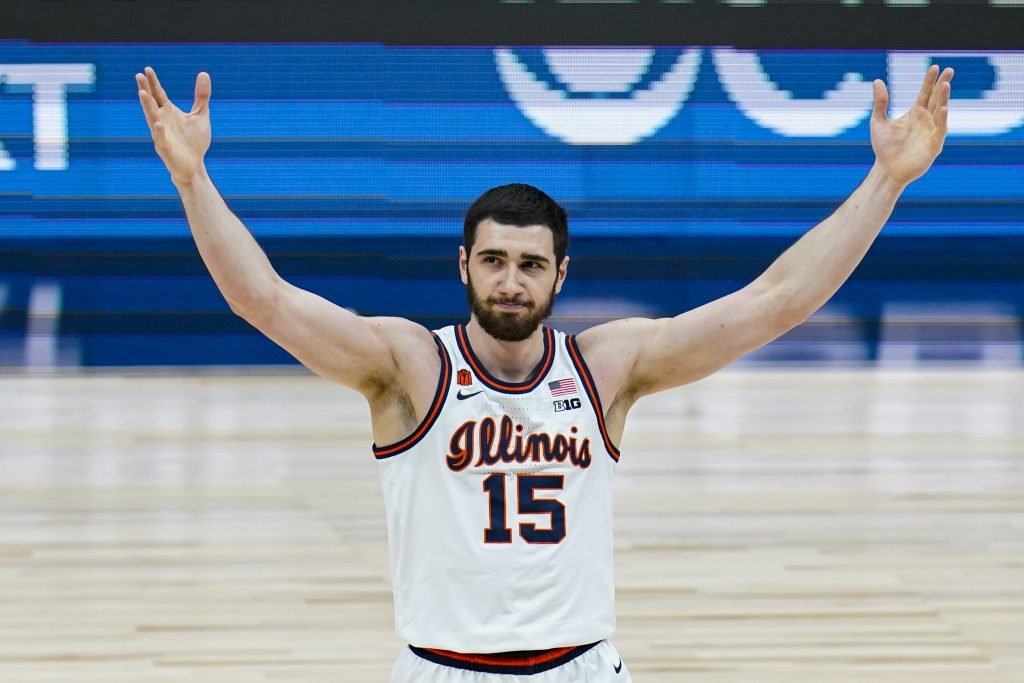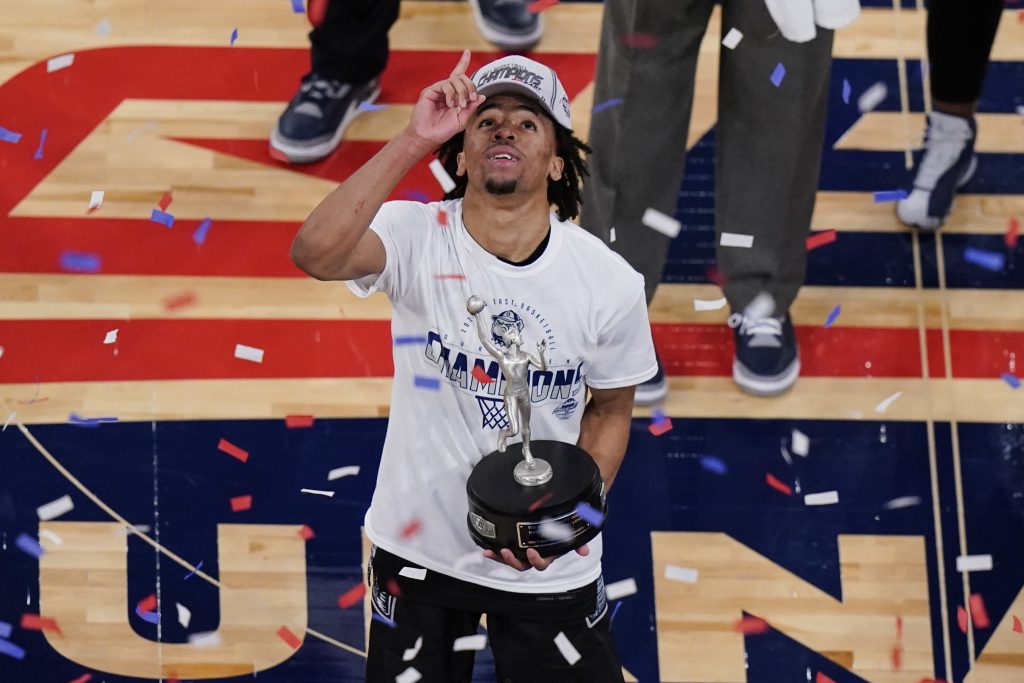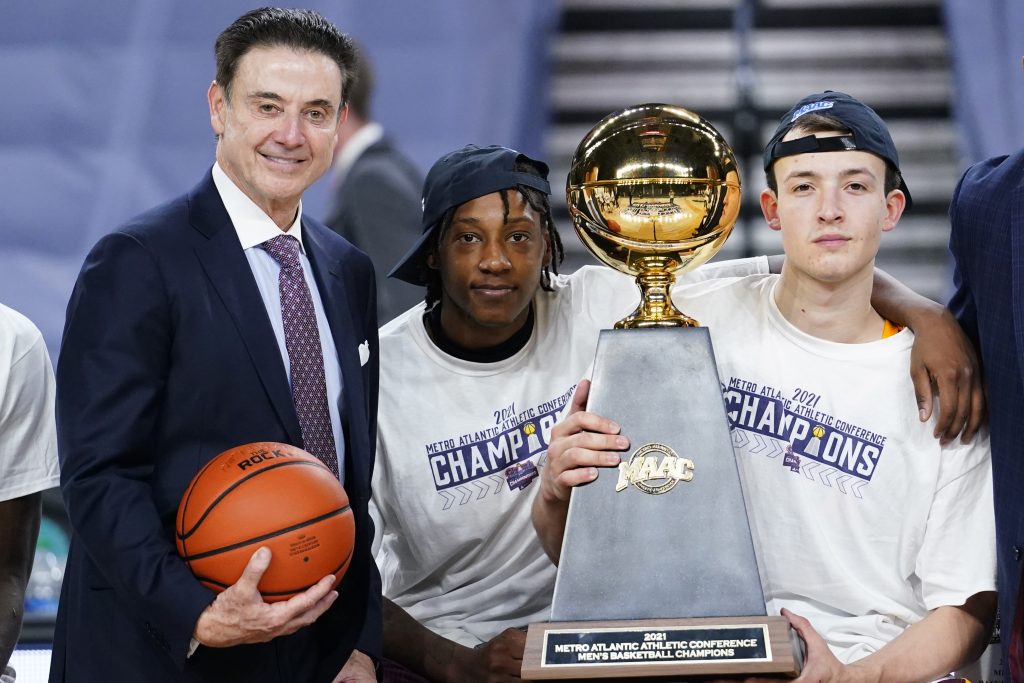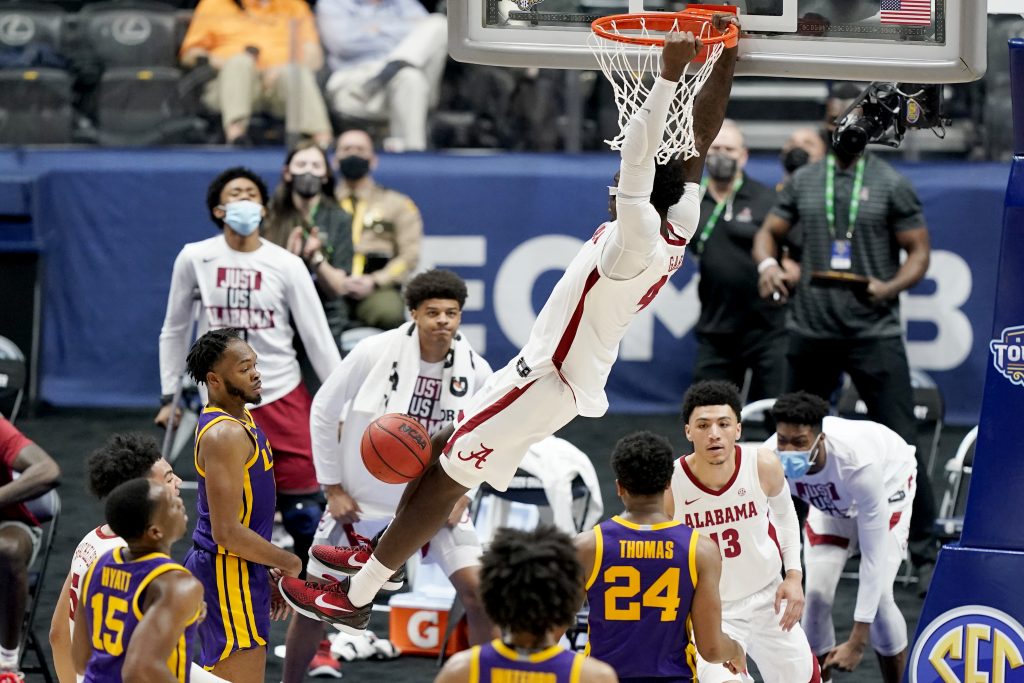AP- The biggest unknown leading into a March Madness bracket reveal more than a year in the making had little to do with bubble teams or top seeds. Instead, it was the not-so-simple matter of which programs would be healthy enough to play.
Kansas and Virginia, two programs hit with COVID-19 breakouts over the past week, made it into the bracket released Sunday by the NCAA selection committee, signaling both teams believe they’ll have enough healthy players to be ready for their tip-offs next weekend.

That there was any doubt about the Jayhawks and defending champion Cavaliers securing spots in the 68-team tournament was the most jarring reminder that the 2021 tournament itself is no sure thing.
“There were a lot of different things about this year’s selection process,” said committee chairman Mitch Barnhart, the athletic director at Kentucky.
A year after the tournament was canceled as the COVID-19 virus was mushrooming into a worldwide pandemic, all 68 teams will gather in Indiana for all 67 games beginning Thursday and ending April 3 and 5 with the Final Four. But all it takes is a single COVID outbreak to upend the finely calibrated beauty of that plan. More than one and the entire endeavor could crater.
There were no surprises among the four No. 1 seeds. Gonzaga, Baylor, Illinois and Michigan earned those slots – with the Bulldogs the 11-4 favorite to win it all and become the first team since the 1976 Indiana Hoosiers to finish a season undefeated.

The last teams to earn the 37 at-large bids — one more than usual because the Ivy League canceled play this year — were Drake and Wichita State, which play Thursday in a First Four game, and UCLA and Michigan State, two decorated programs with surprisingly low seeds that meet in another play-in game.
“Heck of a game to start the tournament,” Barnhart said, with tongue in cheek.
Four teams that didn’t make it — Louisville, Colorado State, St. Louis and Mississippi — have been put on stand-by. They could find their way into the bracket if a team in the field notifies the NCAA by Tuesday night that it must withdraw because of health concerns. After that, if a team pulls out, its opponent will advance via what is essentially a forfeit.
Fittingly for such an unpredictable season, some teams hoping to sneak in off the bubble were denied when Oregon State and Georgetown — coached by its own former superstar, Patrick Ewing — won their conference tournaments to steal bids they wouldn’t otherwise have won.
Another unexpected entry is a familiar face: Rick Pitino. The coach, ousted at Louisville after a sordid recruiting scandal that enveloped the program for years, led his new team, Iona, from the ninth seed in the Metro Atlantic Athletic Conference all the way to the league title and the automatic bid that comes with it. The Gaels open Saturday against Alabama. Iona played only 13 regular-season games because of COVID-19 concerns that sidelined the Gaels for weeks. It was that kind of season.

And if hoops fans needed any more evidence of how unfamiliar this tournament will feel, maybe it’s this: For the first time since 1976, Duke and Kentucky will both be missing from the tournament. Like Virginia and Kansas, Duke pulled out of its conference tournament last week because of COVID-19. The Blue Devils announced that marked the end of their season, before telling the NCAA that, yes, they’d be available for March Madness if asked. But no dice. The 13-11 record wasn’t enough.
Virginia and Kansas were never in doubt until the coronavirus hit both programs. The Jayhawks (20-8) will bring a No. 3 seed into the tournament’s West region — the NCAA stuck with the usual names of the regions — while the Cavaliers (18-6) will be a 4 seed in the same part of the bracket, and come in as the most unusual of defending champions.
They won it all in 2019, and were poised for the run at a repeat last March when sports got wiped off the map by the still-nascent pandemic.
A year later, sports are back, but the hoops the NCAA is jumping through to make this tournament go are a symbol of how far we are from normal.
The decision to place all the games in and around the Indianapolis area is a first-of-its-kind move. Also unique are the quarantine-like situations all teams will be under during their stay. Players will get their own rooms and teams will have their own floors in a cluster of hotels around the downtown convention center. That facility, usually a magnet for fan fests and coaching conferences, will turn into the main practice and meeting area for all the teams. Players will have to produce negative tests for seven days before arriving in Indianapolis to be eligible to play.
And if they’re not? In one of its most eye-grabbing tidbits, the NCAA announced that if a team is hit with the virus but still has five players who can pass the protocol, that’s enough to get on the floor for tip-off.
All just another piece of the puzzle for Americans to consider when they get back to a much-missed rite of spring — filling out their brackets, crossing their fingers and waiting for madness to begin.
___ By EDDIE PELLS AP National Writer







